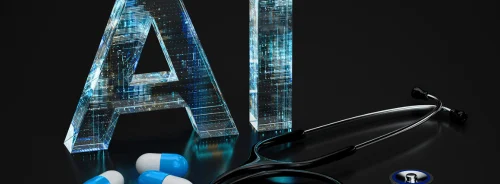Digital health technologies are advancing at an unprecedented rate, particularly in the post-COVID era, where innovations such as Software as a Medical Device (SaMD) are essential for addressing global health challenges. These technologies enable remote care, improve patient access, and optimise healthcare delivery. However, traditional regulatory frameworks often struggle to keep up with the pace of development in this sector, particularly as artificial intelligence (AI) and machine learning (ML) increasingly shape the future of healthcare. To ensure these technologies remain safe and effective, innovative approaches to regulatory evidence generation are essential. One such method is clinical simulation, which bridges the gap between the rapid evolution of digital health solutions and the rigorous demands of regulatory approval.
The Growing Importance of Clinical Simulation
Clinical simulation is a promising solution for evaluating digital health technologies in a controlled yet realistic environment. Long used in medical education, this method allows researchers to replicate real-world scenarios and test technologies with actual clinicians. The key advantage of clinical simulation is its ability to assess technologies without the risks associated with real-world trials. By simulating the use of these tools in clinical settings, researchers can gather data on how they function in practice, identify potential issues, and refine them for improved safety and efficacy. This approach is essential for SaMD, where iterative updates and improvements are standard. The ability to test each version of a software update without delaying market entry or risking patient safety is a game changer for regulatory approval processes.
A practical example comes from a recent study involving oncology patient cases. Clinicians used a specialised digital solution to match patients with clinical trials, demonstrating that the technology was faster and more accurate than traditional methods. This shows how clinical simulation not only assesses the viability of digital tools but also highlights the potential improvements they can bring to healthcare.
The Regulatory Challenge and Need for Innovation
Traditional regulatory frameworks struggle with the rapid, iterative changes inherent in digital health technologies. SaMD often undergoes frequent software updates, particularly when AI and ML components are involved. Each update can potentially change the device's performance or introduce new risks, making it difficult for regulators to ensure continuous safety and efficacy. Initially designed for physical medical devices, current regulatory processes are often too slow and rigid to accommodate the fast development cycles of software-based innovations.
To address this challenge, new regulatory approaches are necessary. Clinical simulation offers a more agile and flexible method of generating the evidence required for regulatory approval. Simulating real-life medical scenarios provides regulators with high-quality data on the performance of digital health technologies in a low-risk environment. This not only accelerates the regulatory process but also enables innovators to bring their products to market more quickly, benefitting patients and healthcare providers alike.
The SIROS Framework: A Pathway for Future Regulation
Researchers have developed the Simulation for Regulation of Software as a Medical Device (SIROS) framework, recognising the need for a structured approach to evaluating digital health technologies. This framework was created through a collaboration between the Institute of Global Health Innovation at Imperial College London and Roche Diagnostics. It provides regulators with 43 criteria, grouped into seven domains, to assess SaMD through clinical simulation. These domains cover essential aspects such as the study population, the delivery and fidelity of the simulation, and the analysis of software and AI components.
The SIROS framework is a significant step forward in ensuring that clinical simulations provide regulators with the necessary information to evaluate the safety and efficacy of digital health technologies. By focusing on creating realistic simulation environments, ensuring proper study design, and analysing the performance of AI and ML algorithms, the framework enables a comprehensive assessment of SaMD. This structured approach not only supports faster market access but also fosters a culture of evidence-based innovation in digital health.
Conclusion
As digital health technologies continue to transform healthcare delivery, the importance of developing robust regulatory frameworks cannot be overstated. Clinical simulation offers a practical, cost-effective method for evaluating these technologies in a controlled, risk-free environment, allowing for the rapid development and deployment of innovations like SaMD. Simulating real-world scenarios enables thorough testing and ensures that digital tools meet regulatory standards for safety and efficacy.
The introduction of the SIROS framework represents a critical advancement in the regulation of digital health technologies, offering a clear pathway for integrating clinical simulation into regulatory practices. Moving forward, it is crucial to expand the use of clinical simulation across all stages of digital health technology development, ensuring that these innovations are safe, effective, and accessible to patients worldwide. The future of healthcare depends on our ability to adapt regulatory processes to keep pace with technological progress, and clinical simulation provides the ideal bridge to that future.
Source Credit: HealthcareTransformers
Image Credit: iStock







